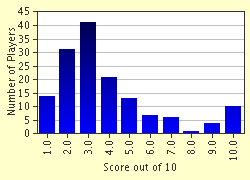Quiz Answer Key and Fun Facts
1. The Danes Ivar the 'Boneless', Halfdan and Ubbe commanded the 'Great Heathen Army' of 865. It is said that they came to avenge their father's death. Who was he?
2. Having acquired horses in East Anglia the Viking army moved north to meet up with Ivar, who had come over from Dublin, and with little resistance they captured the Northumbrian city of York. How long did they hold the city before they were seriously challenged by the Northumbrians?
3. In 867 the Danes entered Mercia and occupied Nottingham. What happened later when they were challenged to battle by the combined armies of Mercia and the West Saxons at Nottingham?
4. The Danes moved from Northumbria in 869 and returned to the south east and defeated the East Angles. Edmund, the East Anglian king, was killed by Ivar. What manner of death was allegedly inflicted upon Edmund?
5. In 870 the Viking army moved from Thetford in East Anglia, and constructed a fortified camp in Wessex for use as a base of operations. Where in Wessex did the Danes construct their camp?
6. After the attack on Wessex where did the combined armies of Halfdan and Guthrum go?
7. King Burgred fled from Mercia and the Danes set up one of his thegns named Ceolwulf as king. Not long after Burgred died and was burried at the church of St Mary. Where was this St Mary's church?
8. Halfdan and the remnant of his army went north and created the kingdom of York.
9. Halfdan was killed in battle in 877. Against whom was Halfdan fighting?
10. Ubbe, last of the original leaders of the 'Great Heathen Army' was killed in battle against the West Saxons early in 878. What prized standard was captured by the West Saxons in this battle?
Source: Author
Yorkie1
This quiz was reviewed by FunTrivia editor
bloomsby before going online.
Any errors found in FunTrivia content are routinely corrected through our feedback system.

